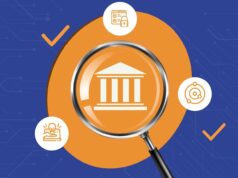Much has been said about the Millennial generation and how it impacted society, changing purchasing habits, and even the way we work. But now we are facing a new generation that will change everything once again. In this article, we tell you what you should know about Digital Natives and their characteristics. A generation born between approximately the years 1995 and 2015 and which is also known as Generation Z.
Millennials versus Digital Natives
Expert educator Marc from wowessays was the one who coined the term “digital natives” back in 2001. Millennials and Digital Natives share behavioral characteristics. It does not mean that all individuals are the same. As we know, several aspects can be influenced, such as context, culture, or education.
For the development of strategic decisions, it is not enough to refer to a generation in general. And even more so when the current trend is the hyper-personalization of brands on their customers. Focusing more and more on knowing the unique characteristics of each person. The market has seen the need to adapt, and it is no longer valid to say that a product is aimed at women aged 30 to 40 years because the conditions are becoming more specific and diverse.
Thus, it is essential to know in advance the peculiarities that are adopting the new generation called digital natives and therefore anticipate changes and take advantage of their qualities and preferences.

Who are the digital natives?
These young people have a natural language and digital environment because they have adopted technology in the first instance. Technological tools occupy a central place in their lives. They depend on them for all kinds of daily issues, from socializing or studying to shopping, getting information, having fun, etc. That is why they no longer know an era without constant connection to the world.
Characteristics of digital natives:
- Attraction to new technologies
- Impatient and versatile
- Entrepreneurs
- Innovative
- Committed
- Natural collaborators
- Networked learning
What makes digital natives different?
Digital natives approach their work, learning, and play in new ways. They navigate fluently, are proficient with a mouse, use digital audio and video players daily, take digital photos that they manipulate and send, and use their computers to create videos, multimedia presentations, music, blogs, etc. They quickly absorb multimedia information from images and videos as well as, or better than, text. They consume data simultaneously from multiple sources, expect instant responses, constantly communicate, and create content. Digital natives love to do several things at the same time: they are multitaskers.
They are quick in their actions and decision-making. They want immediate results, and if the topic does not interest them, they turn the page. For these users, the options are unlimited. Time is not, so it is known that their discard time is about 8 seconds. If we approach psychology, we can say that the digital native builds his concepts of space, time, number, causality, identity, memory, and mind from, precisely. These digital objects surround him, belonging to a highly technified environment.

Digital Natives: the digital environment
Regarding the educational environment, these students are much more predisposed to use technologies in study and learning activities than what traditional academic centers and processes can offer them. This situation can generate a feeling of dissatisfaction with school practices. They are creating an increasing distance between students and teachers about traditional educational training.
Thanks to the daily use of platforms, digital natives have developed a very visual learning capacity. For this reason, they will not limit themselves to face-to-face schools, as millennials do. They will bet on online learning as a compliment and as a way to personalize their training. The Work In Your Passion trend inspires these young people to be more entrepreneurial, so they will probably not look for a job. They will create their own.
E-learning: learning adapted to digital natives
The incorporation of digital natives has also meant a change in education. Today’s and tomorrow’s students do not fit in with today’s educational systems and learning processes.
Teachers know less about technology than their students. As a result, digital natives may be being trained in a way that is not for them. It is challenging to keep them attentive in a traditional classroom of content exposure by the teacher. They have the perception that they can consult that content on the Internet, exchange it among themselves, locate it in other sources, or elaborate maps and visualizations. In short, they tend to participate actively in the construction of their knowledge.
The educational guidelines for the future include integrating tools that provide easy-to- find, understand, and use resources. Also, these tools must be well designed and arranged in a logical, intuitive, and accessible environment for the student. In this way, we will achieve greater attention and performance of digital natives in terms of information, content, and tasks.
An outstanding element of e-learning is microlearning. An educational strategy characterized by the brevity of its lessons and learning units. This major global trend of micro-training knowledge capsules is, for digital natives, an ideal way to acquire knowledge.
And who are the digital immigrants?
When we talk about digital natives or generation Z, we can not forget another concept very related and sounded nowadays. Those known as digital immigrants are people between 35-55 years old who have been forced to adapt to technology and increasingly technological society. The digital immigrant can have participated in two different realities: traditional communication and “modern” communication. In turn, immigrants’ processes of action tend to be reflexive. Therefore, slower. Meanwhile, digital natives can make decisions quickly, without much thought, and in complex environments.
All these characteristics give us a vision of how we can relate to this generation known as Digital Natives or Generation Z. We must also consider each one’s specific needs, rather than dividing characteristics of an age classified by years of birth.
What did you think of this article on digital natives? Could you leave us your comments and share them?
It is essential to realize how society is evolving. Digitalization has accelerated exponentially, and companies’ survival will depend on their ability to reshape their future.










